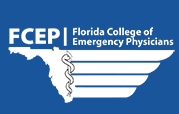Aims & Scope
FJEM is an open access, peer-reviewed journal that considers articles on all aspects of emergency medicine, including practice, education and research.
FJEM accepts the following article types:
- Clinical Images
- ~ 300 words or less: should include the following sections: Image description, Discussion.
- Case reports
- ~1500 words or less: should include the following sections: Introduction, Case presentation, Discussion, Conclusion.
- Research studies
- ~ 3500 words or less. Introduction, Methods, Results, Discussion, Conclusion. Please follow the appropriate Equator Network guidelines for study types as applicable.
- Reviews
- ~ 3500 words or less. Please follow the correct format for systematic, narrative or scoping reviews as appropriate.
- Special Communication
- ~ 2000 words or less. analyzes, reviews, or discusses a topic, but does not present original research data. These articles are often commissioned, authoritative and scholarly, and cover topics that are of broad interest to the FJEM readership.
Please note: FJEM does not accept any animal studies. Research should focus on humans and can include clinical or educational retrospective or prospective data, surveys, meta-analyses, and more.
All articles must have the following declarations sections at the end of the manuscript:
- Ethical consideration
- Please specify that informed consent was obtained for any case report or clinical image. For research studies, please state the name of the institutional or commercial IRB approval, with study number.
- Funding
- Please state by whom the study was funded if applicable.
- Conflict of Interest
- Please state any conflicts of interest for each of the authors, including consulting or board positions or paid work that could potentially influence the content of the manuscript or its conclusions.
- Acknowledgements
- This is where authors can thank someone who contributed to the work but does not qualify as an author per IJCME guidelines.

